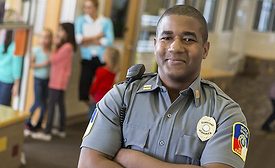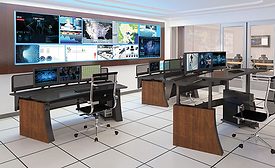Home » security officer
Articles Tagged with ''security officer''
Enlisting a broker on your side ensures you know the market and make rational decisions
Read More
2018 Guarding Report: Changing Times for the Guarding Industry
How enterprises are working to boost pay and training for security officers, in addition to considering options like K-9s and robots.
December 1, 2018
Security Robots on Patrol
How a security robot, the first one employed in Arizona, acts as a visual deterrent as well as an information-gathering machine.
October 8, 2018
Primary Considerations and Pitfalls for Security Control Room Design
Developing an effective SOC requires more than just the streamlining of physical security systems
September 11, 2018
Sign-up to receive top management & result-driven techniques in the industry.
Join over 20,000+ industry leaders who receive our premium content.
SIGN UP TODAY!Copyright ©2024. All Rights Reserved BNP Media.
Design, CMS, Hosting & Web Development :: ePublishing












